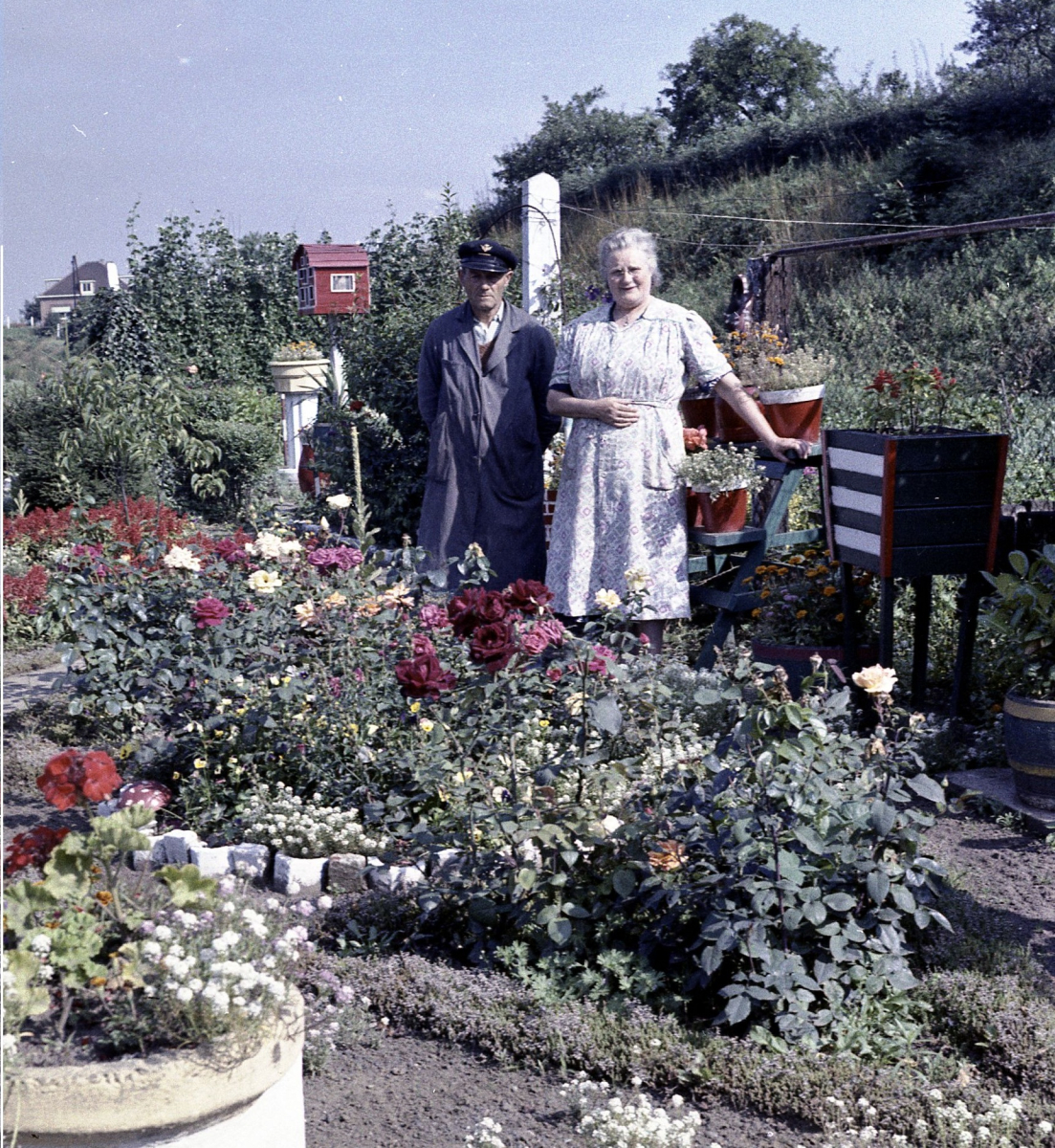Stations in Bloom

A railway employee and his wife pose in front of their flower bed at Nossegem station, SNCB photo collection.
Stations in Bloom
There was a time when stations were home to an array of fauna and flora. In that time, the Stationmaster still lived in the station. Helped by his wife and workers, he strived to embellish his work place which was also his home. Thus, it was quite common at the time to see vegetable gardens and flower beds in stations, chickens pecking between the rails, a dovecote built up against the station building, or hear water trickling from a fountain.
Stations became enchanting spaces through personal initiative, but not only…
At the very beginning of the 20th century, the Compagnie du Nord belge, which operated the Meuse line in particular, encouraged flower-growing in stations, by inviting the personnel working in them to sow and plant flowers, granting subsidies for the purchase of seeds, providing tutors and soliciting the cooperation of horticultural companies and plant nurseries. In 1906, the Chemins de fer de l'Etat belge followed this example and undertook to brighten up the platform and immediate surroundings of the stations.
This trend took off with the Brussels Universal and International Exposition in 1910. Touring*, a major tourism association, wanted tourists coming to visit the universal exhibition to be able to admire beautiful landscapes throughout their journey. With the approval of the administration of Chemins de fer de l’Etat, Touring organised a competition offering financial gains as a prize. This initiative persisted with the creation of the SNCB (1926) and was greatly boosted by the festivities for the 100th anniversary of Chemins de fer belges, followed by the Heysel Universal Exhibition in 1958. To do so, SNCB was assisted by the “Royal Horticultural and Botanic Society” of Gand. A short anecdote: at the Central Workshop of Gent-Brugge, next to the rolling stock, there used to be greenhouses in which the plants destined to decorate Belgian stations were cultivated.
During all those years, granting rewards to the best railway gardeners (both financial gains and diplomas) made it possible to obtain highly remarkable results in just a few years.
We now let you discover a few beautiful floral creations exposed in our Belgian stations.
* Royal Society of the Belgian Touring club
Today we're open from 10:00 until 17:00 (last admission at 15:30).
